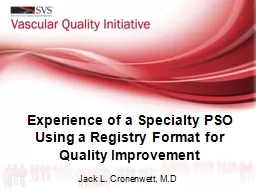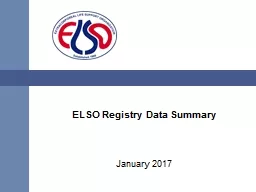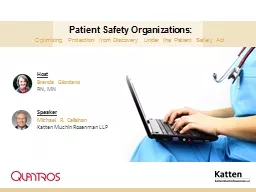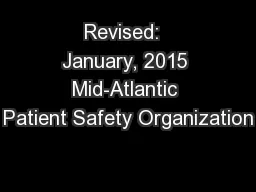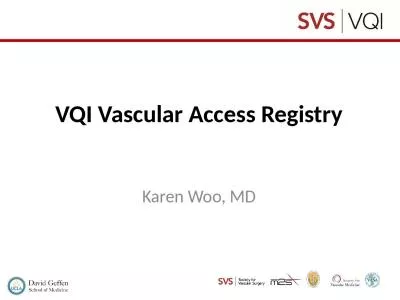PPT-Experience of a Specialty PSO Using a Registry Format for
Author : test | Published Date : 2016-08-07
Jack L Cronenwett MD Society for Vascular Surgery National society of 3600 vascular surgeons Launched Vascular Quality Initiative 2011 To improve the quality safety
Presentation Embed Code
Download Presentation
Download Presentation The PPT/PDF document "Experience of a Specialty PSO Using a Re..." is the property of its rightful owner. Permission is granted to download and print the materials on this website for personal, non-commercial use only, and to display it on your personal computer provided you do not modify the materials and that you retain all copyright notices contained in the materials. By downloading content from our website, you accept the terms of this agreement.
Experience of a Specialty PSO Using a Registry Format for: Transcript
Download Rules Of Document
"Experience of a Specialty PSO Using a Registry Format for"The content belongs to its owner. You may download and print it for personal use, without modification, and keep all copyright notices. By downloading, you agree to these terms.
Related Documents

